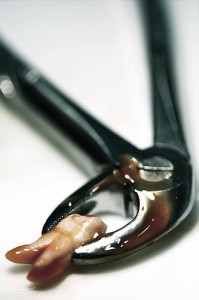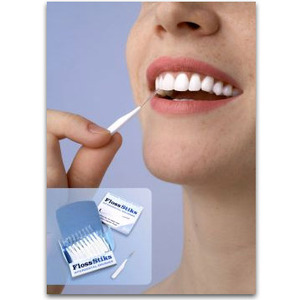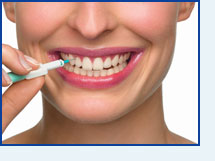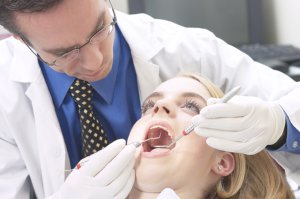Bad breath, also known as halitosis, is a term used to describe noticeably unpleasant odors exhaled in breathing. It is one of the most common reasons people go to the dentists, after tooth decay and gum disease. Most of the time, individuals with bad breath are unaware they have it. Even though it is not life threatening, it can be a serious social problem that can damage an individual’s self esteem and confidence, giving rise to depression. Bad breath can cause extremely embarrassing situations in social interactions and relationships at work and in your personal life as well. Individuals who suffer from halitosis tend to avoid interactions for fear of embarrassment and to avoid any awkward interactions.
Tag Archives: oral hygiene
Dental management of leukemia patients
Â
Leukemia is a type of blood cancer whereby there is an abnormal increase of immature/ primitive white blood cells. White blood cells function by producing antibodies to fight off infection from our body. Leukemia patients are more prone to infections as their abnormal white blood cells cannot produce antibodies. Continue reading
Caries diagnosis Part 2
Numerous risk indicators, that is, characteristics or measurements that assist in the prediction of caries, whether or not they are involved in caries causation, have been suggested for children. Unfortunately, more of the supportive data come from cross-sectional correlations with accumulated caries experience than from prospective, protocol-based incidence studies. The prospective studies employed different combinations of potential predictors in a variety of populations, varied considerably in sample size and quality, and have not produced a broadly applicable index or set of criteria for risk assessment. More and higher-quality comprehensive, longitudinal, multifactor studies of implicated risk indicators are needed to obtain firm support for their associations with caries incidence, to clarify the strengths of these associations in differing populations, and to reveal the extent to which the risk indicators provide independent as opposed to redundant information. In addition, although the nature of the disease process suggests that many of the proposed indicators may well be appropriate throughout life, validation studies in adult populations are largely absent or incomplete. Continue reading
Abscess Tooth Symptoms
What is an Abscessed Tooth?
A tooth or dental abscess is a localized collection of pus in a sac formed by disintegration of purulent material from a bacterial infection. Invasion of bacteria which cannot be drained results in abscess. An abscessed tooth can be further classified into periapical, periodontal or gingival abscess depending on its location in the oral cavity.
- Periapical abscess: located at the apex of an infected tooth surrounding the roots. Continue reading
Dry Socket and Its Management
 What is a dry socket?
What is a dry socket?
Dry socket or also known as alveolar osteitis is a common complication occurring after the extraction of a permanent teeth especially the lower wisdom teeth. The term ‘alveolar’ refers to the jawbone that supports teeth while ‘osteitis’ refers to the inflammation of the bone associated with the extraction socket.
The condition has generally been characterized by degraded or delayed healing associated with breakdown or dislodgement of the blood clot in the extraction socket. It is usually accompanied by persistent, radiating pain in and around the extraction site within a few days after extraction that is not easily relieved by pain killers. The premature loss or breakdown of the blood clot is accompanied by exposure of the underlying bone. Continue reading
Care of Mouth After Tooth Extraction
Teeth extractions are usually done to relieve dental pain or remove loose teeth. However even though your initial problem is solved, you have to take care of the tooth socket which the tooth was extracted or further complications may follow.
Post-operative care instructions would normally be provided by the dentist, in which you will have to follow. If there are any complications after your tooth extraction, always consult your dentist. Do not wait till the problem worsen. Continue reading
How Interdental Brushes Affect Teeth
Supplemental plaque removal measures beyond tooth brushing are necessary in order to thoroughly remove plaque. Although toothbrushing can be effective at removing the plaque residing on sides of teeth, it is generally ineffective for surfaces in between teeth.
There are numerous sites and conditions inside the mouth better served by plaque removal methods and devices other than toothbrushing. Examples of these sites include fixed prostheses, crown margins, in between roots of multi-rooted teeth, orthodontic appliances, the tongue, implants, and dentures. Continue reading
Flossing Alternatives: Inter-dental Devices Part 1
Flossing is encouraged to be part of one’s oral hygiene regime but there is no universally accepted oral hygiene device. The appropriate oral hygiene regimen is determined according to the dictates of the oral condition, personal preferences, dexterity, and lifestyle. Inter-dental devices are alternatives to dental flossing however adequate instruction in the use of any recommended device must be provided. Continue reading
Dental care for the elderly
 Gerodontology is a branch of dentistry that deals with the diagnosis, prevention and treatment of oral diseases. There are few problems which may affect the oral health status of the elderly: Continue reading
Gerodontology is a branch of dentistry that deals with the diagnosis, prevention and treatment of oral diseases. There are few problems which may affect the oral health status of the elderly: Continue reading
Dental Exam and Cleaning
First time visiting a dentist and feeling anxious about what he/she will be doing during your first appointment? This article will briefly outline the basic procedures normally done by the dental professional on your first visit to the dental office. Continue reading




